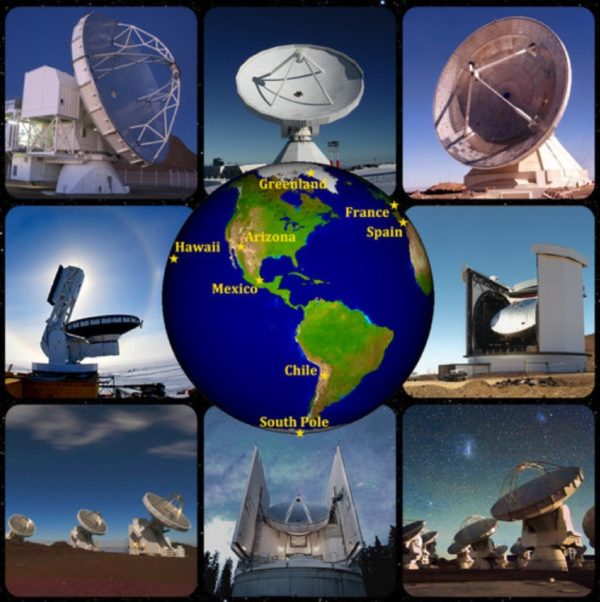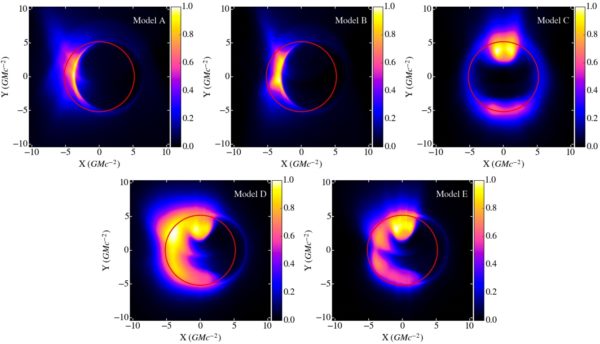“It is conceptually interesting, if not astrophysically very important, to calculate the precise apparent shape of the black hole... Unfortunately, there seems to be no hope of observing this effect.” -Jim Bardeen
Black holes were one of the first consequences of general relativity that were predicted to exist, and the more we’ve studied the Universe, the more interesting they’ve become. We’ve calculated their physical sizes, their effects on the curvature of spacetime, their apparent angular sizes, and the properties of matter that gets caught in an accretion disk around them. But we’re about to take another giant leap forward: we’ve about to directly observe one for the first time.
 A view of the components of the Event Horizon Telescope from one hemisphere. Image credit: APEX, IRAM, G. Narayanan, J. McMahon, JCMT/JAC, S. Hostler, D. Harvey, ESO/C. Malin.
A view of the components of the Event Horizon Telescope from one hemisphere. Image credit: APEX, IRAM, G. Narayanan, J. McMahon, JCMT/JAC, S. Hostler, D. Harvey, ESO/C. Malin.
Sure, it will be in radio frequencies rather than visible light, but we should be able to directly image the event horizon, and contrast those observations with our best predictions. What should that event horizon look like, though, and why -- if it’s completely black -- should we be able to see it at all? The answers are both fascinating and informative, and when the results are released later this year, you’ll want to know.
 Five different simulations in general relativity, using a magnetohydrodynamic model of the black hole's accretion disk, and how the radio signal will look as a result. Image credit: GRMHD simulations of visibility amplitude variability for Event Horizon Telescope images of Sgr A*, L. Medeiros et al., arXiv:1601.06799.
Five different simulations in general relativity, using a magnetohydrodynamic model of the black hole's accretion disk, and how the radio signal will look as a result. Image credit: GRMHD simulations of visibility amplitude variability for Event Horizon Telescope images of Sgr A*, L. Medeiros et al., arXiv:1601.06799.
- Log in to post comments

Remarkable, that event horizon, as it is described by GRT is far from what quantum theory says. When an observer falls to the black hole and crosses aforementioned event horizon, he notice nothing extraordinary (well, if the black hole is large enough). But, in accordance with quantum theory, there will be a firewall, Black hole radiates- level of this radiation is very low for large holes, but when an observer moves closer to the event horizon, time is slowing and frequency and intensity of this radiation increases. If I'm correct, such observer will see increasing shine and he will be evaporated. There will be no difference for him, to cross the event horizon or fall to an ordinary star.